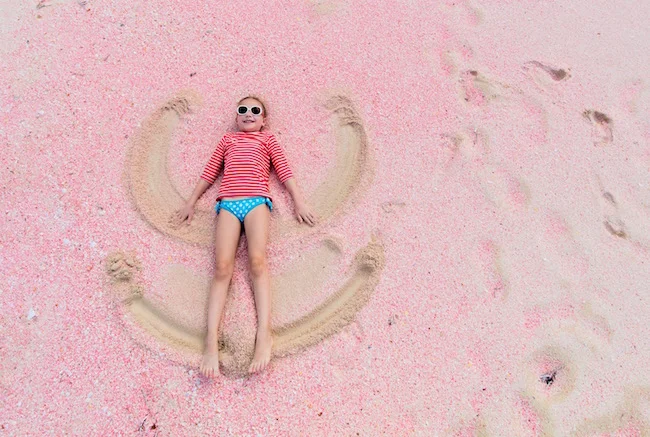People love spending time lounging and playing on the beach. The sand feels soft and warm, it molds nicely to your body when sunbathing and it often harbours intersting treasures. But what exactly is a beach made of? The natural materials native to each locale help create the texture and colour of the sand. Classic beach sand consists mostly of calcium carbonate, a byproduct from shells and decomposed marine organisms. While raw materials such as coral, mollusks and microorganisms add to the melange. Weather, time and the persistent pounding of ocean waves contribute to the manufacture of these tactile waterfront carpets.
A typical beach has an overall light ecru colouring, a composite resulting from many sun bleached elements. However, not all beaches are created equal. Let’s go travelling and visit a few. Pink beaches, found in the Caribbean, Greece and Spain, are heavy with foraminifera, a microscopic organism with a reddish pink shell. Foraminifera is neither an animal or a plant. It is classified as a protist, a single-celled creature that lives inside other shells. Black sand beaches, like the ones in Hawaii, are composed of volcanic minerals and lava fragments. At Pfeiffer Beach in California one can enjoy purple sand whose unique hue comes from particles of glass-like garnet. Norway is one of the few places on the planet that boasts a green beach. Olivine crystals are at work here, getting their olive green colour from ferrous iron. Perhaps the strangest component contributing to a beach is found on Hawaii’s White Sands Beaches. Its famous pristine white sands are made from, none other than, Parrotfish poop. Be sure to use the beach shower before you head home.
